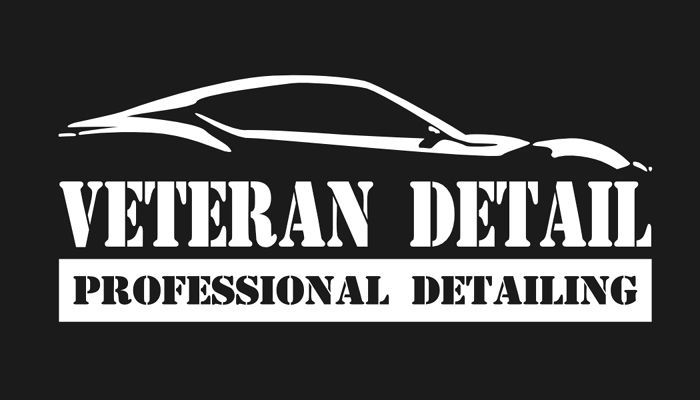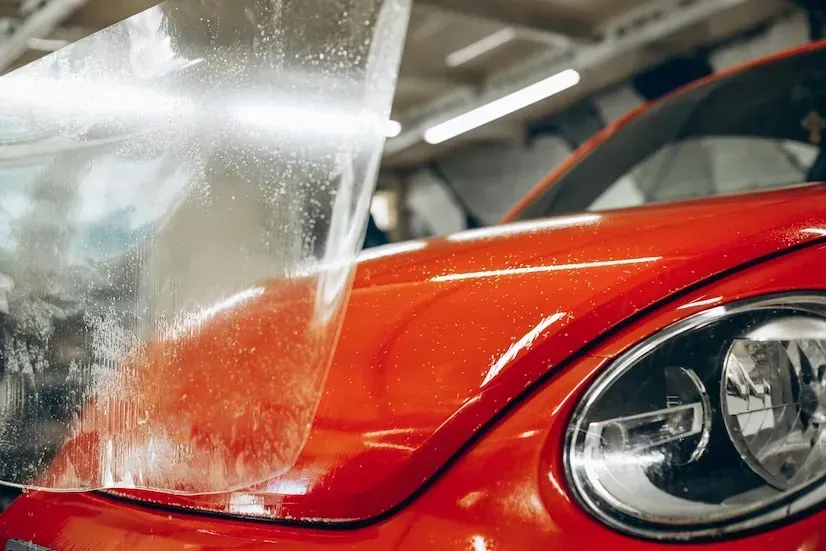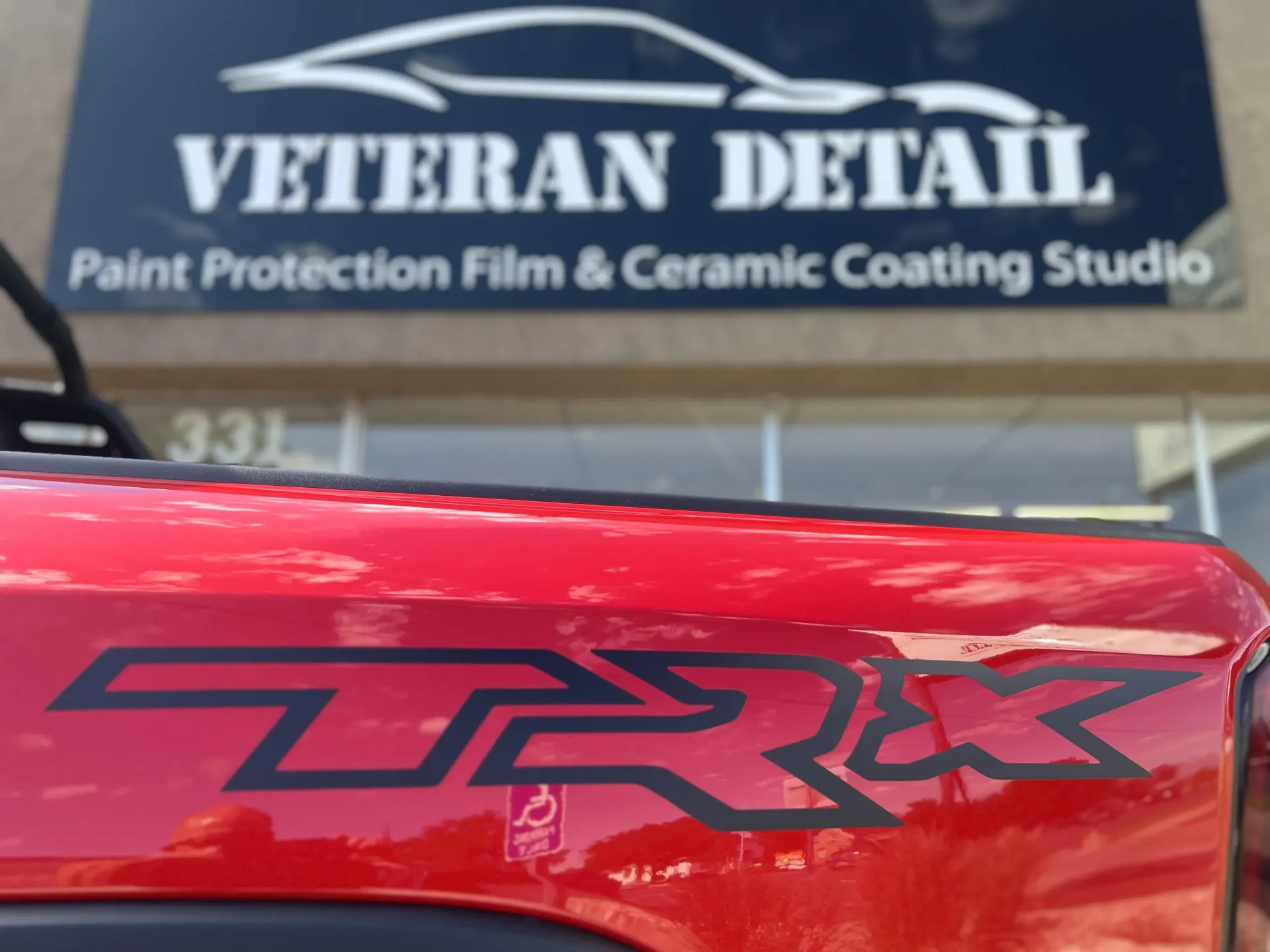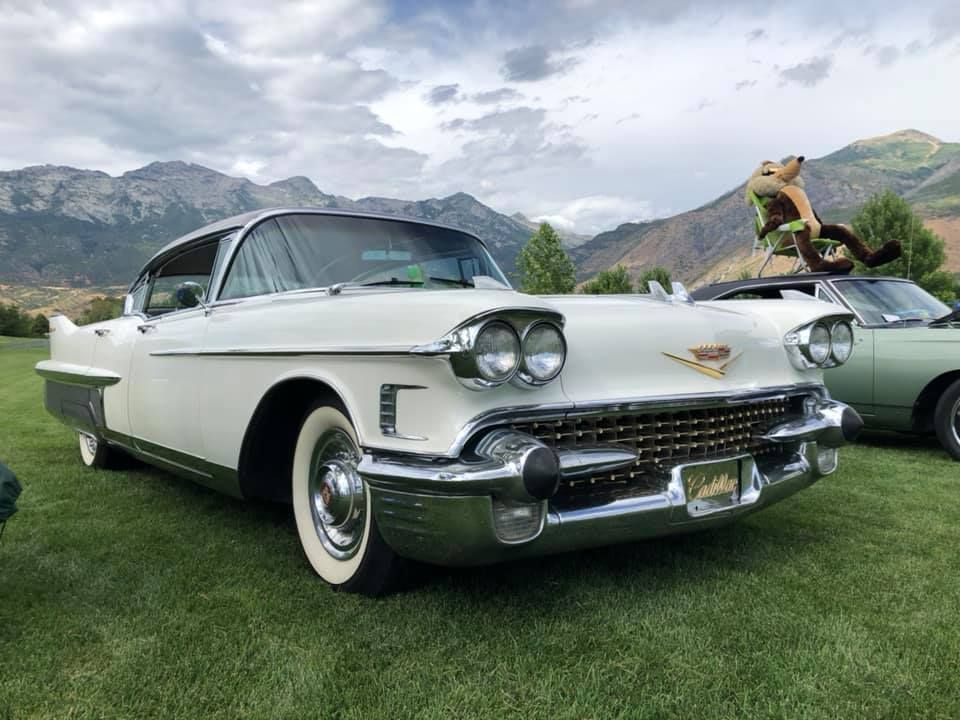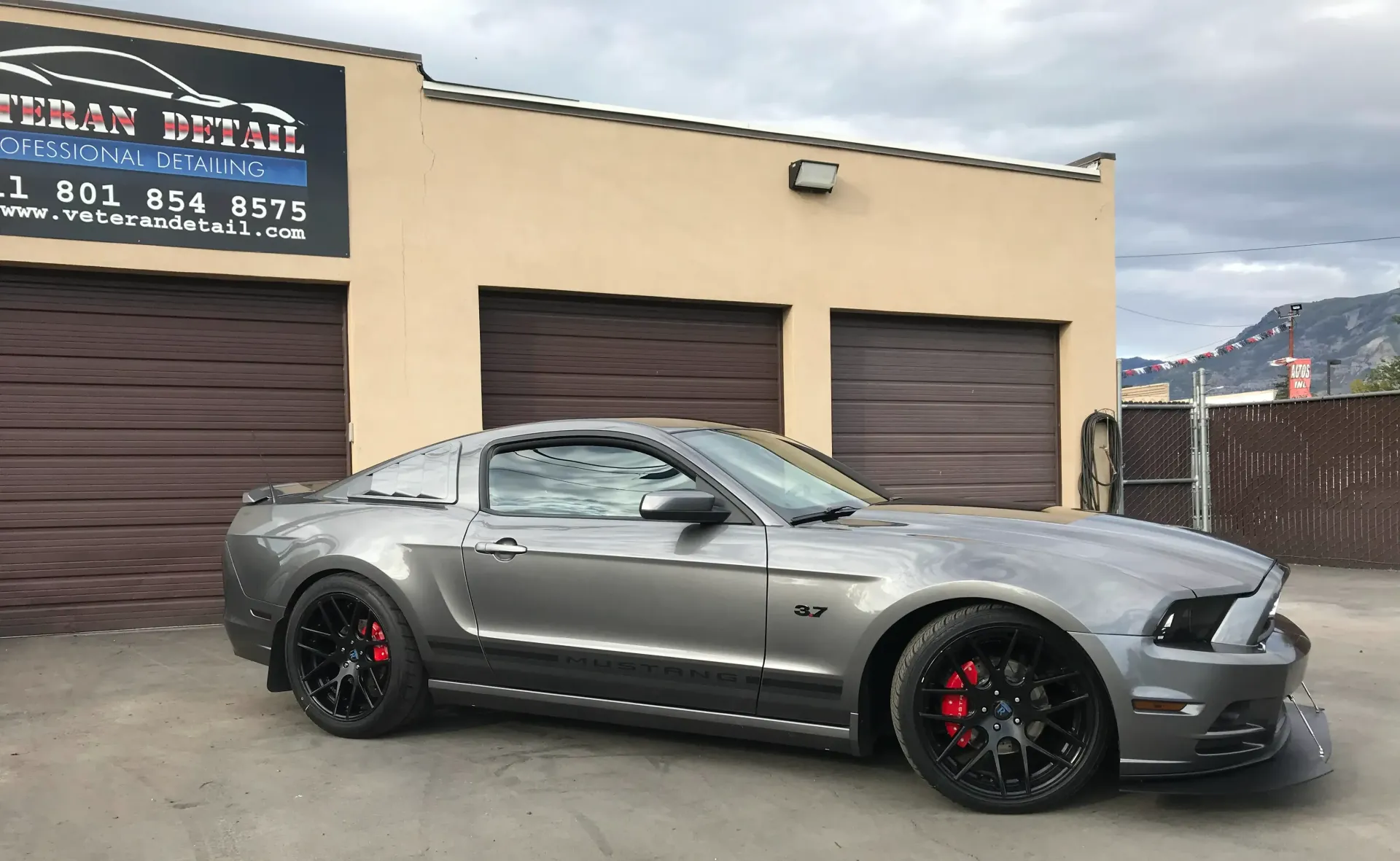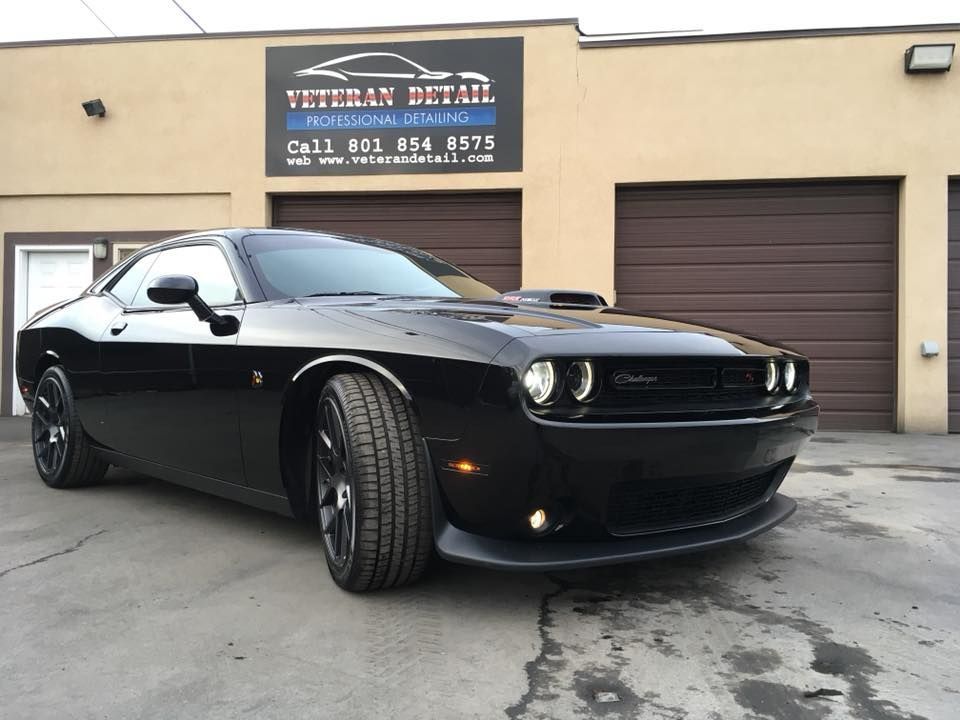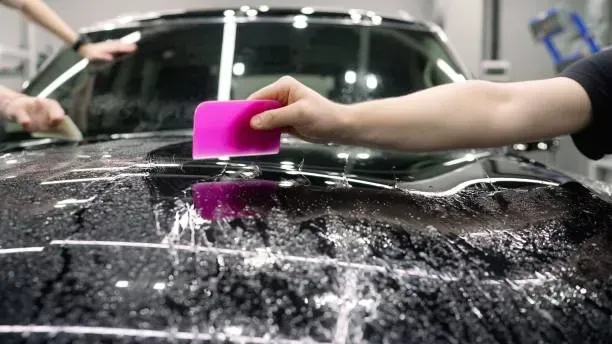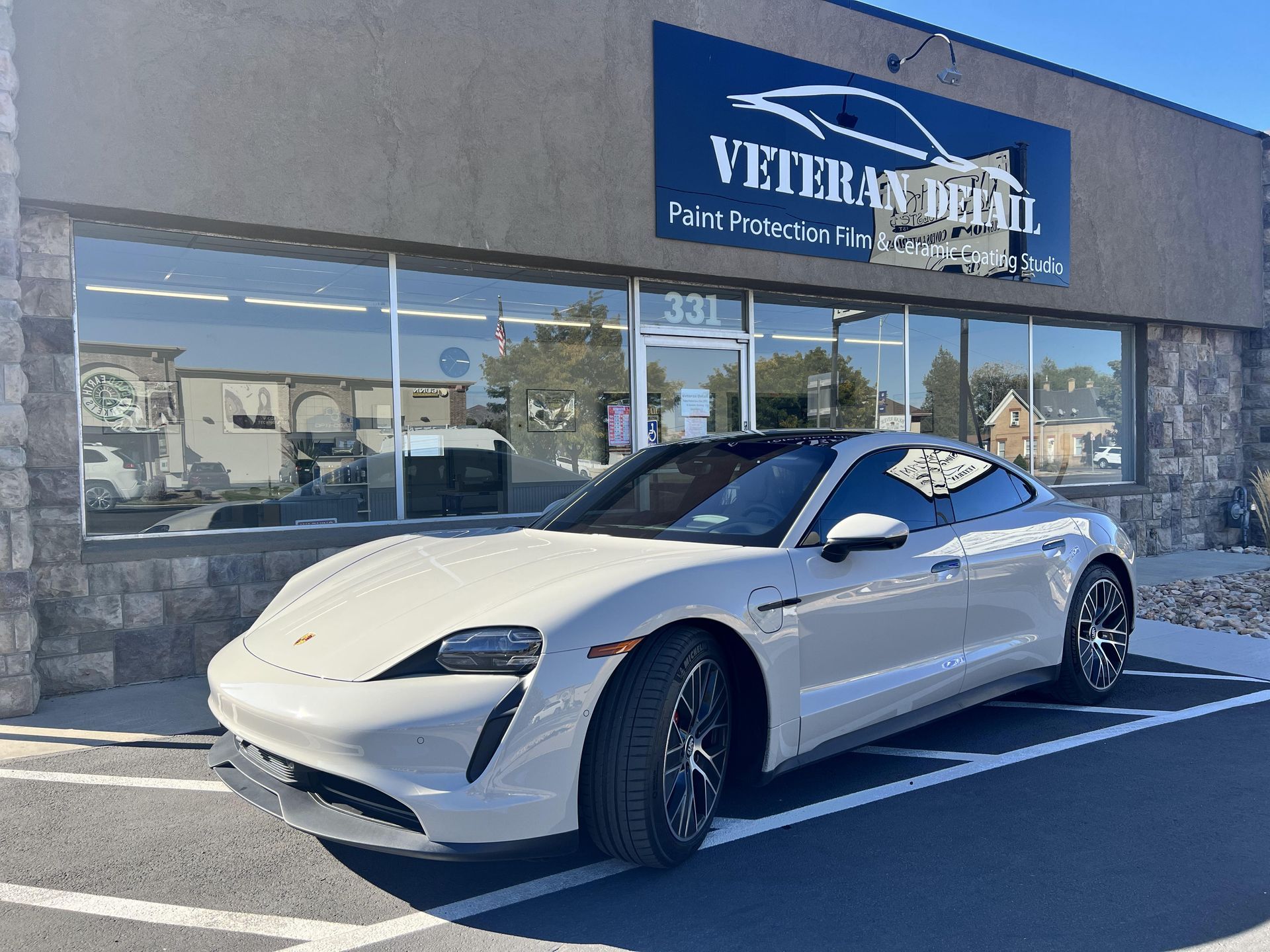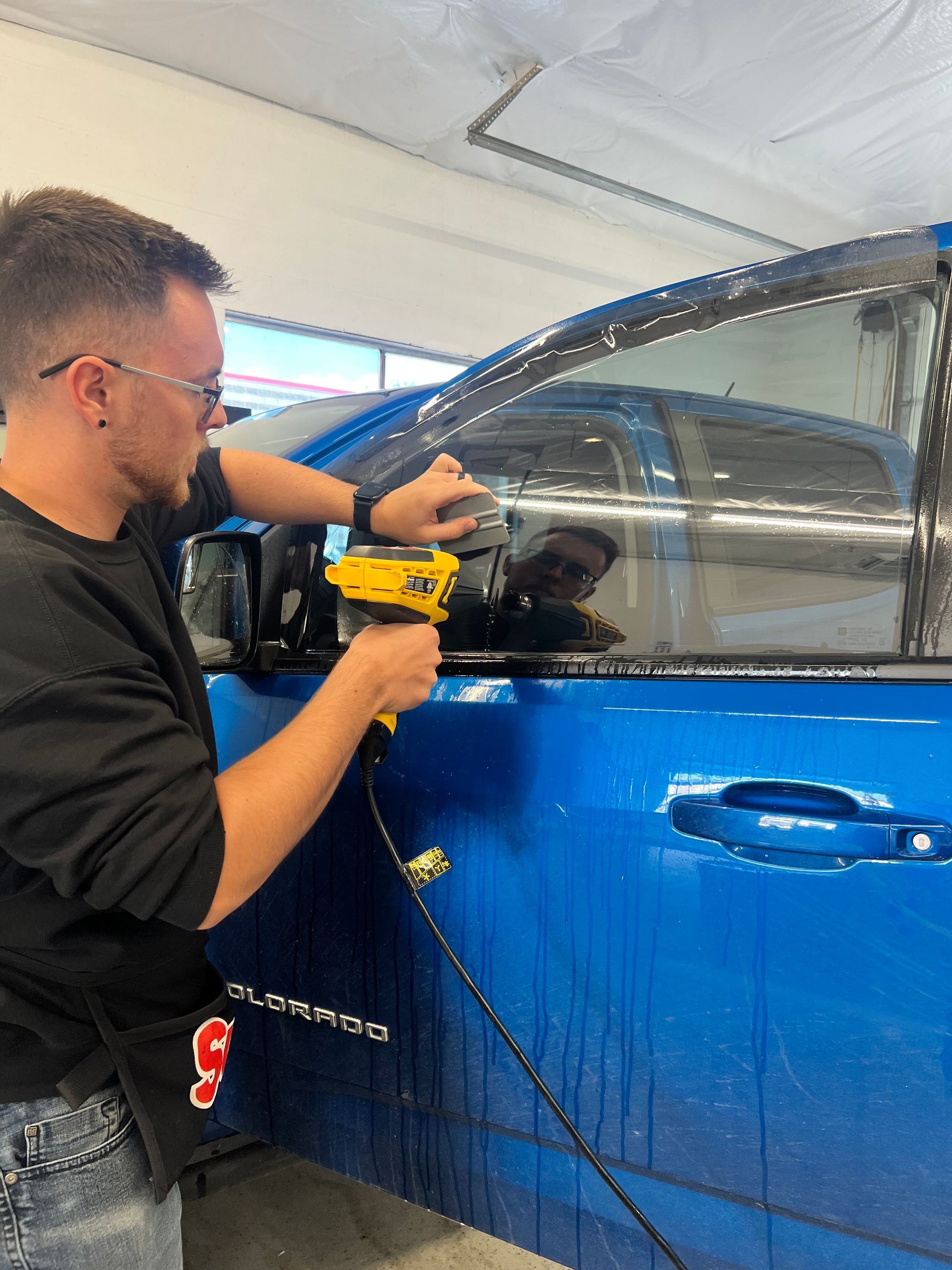Maximize Your Car's Value and Protection: Benefits of Paint Protection Film
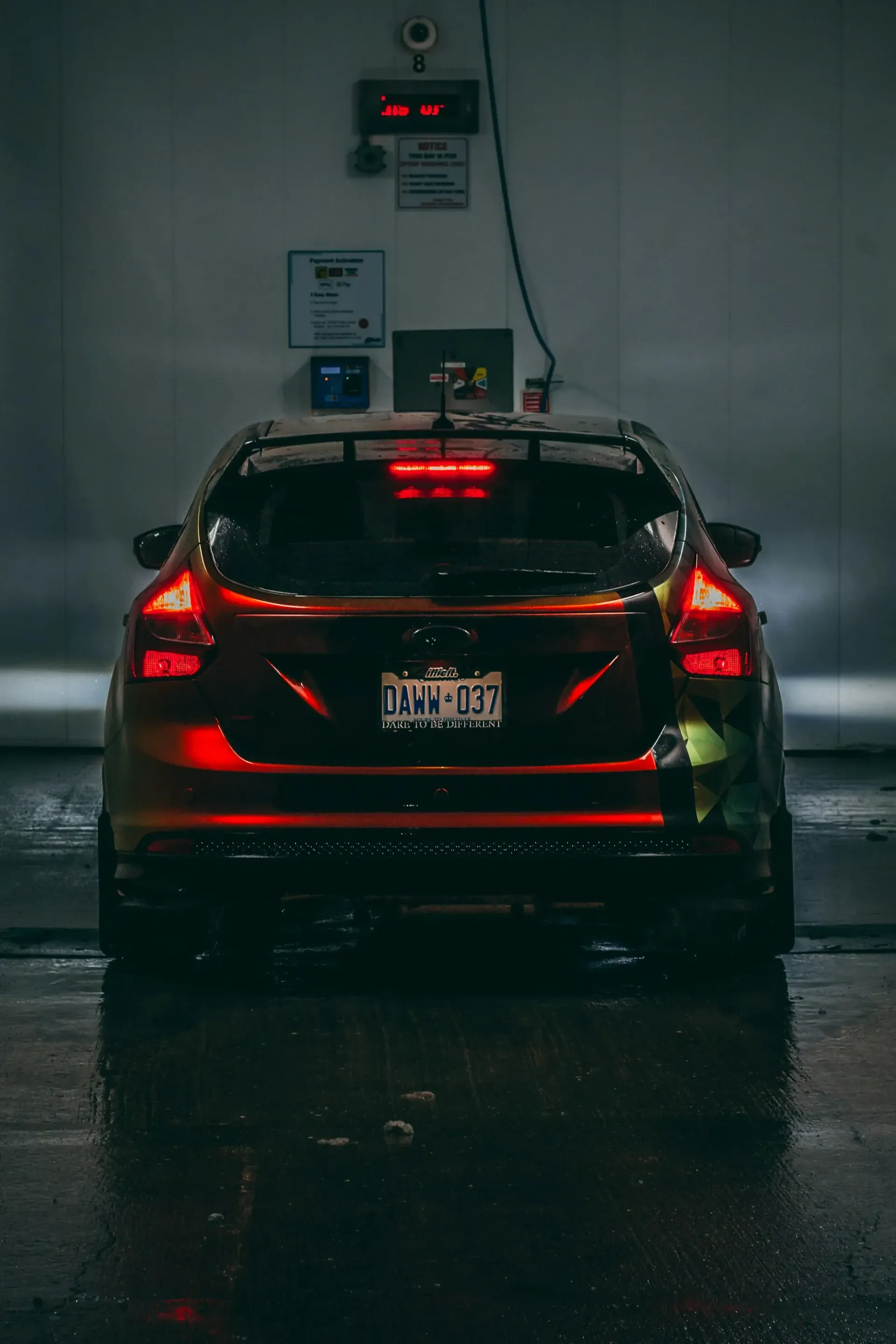
In the world of automotive care, Paint Protection Film (PPF) stands out as a guardian angel for your car's exterior. This nearly invisible shield not only keeps your vehicle looking pristine but also significantly enhances its resale value. With the growing awareness among car enthusiasts about maintaining their vehicle's appearance and value, PPF has surged in popularity. But what exactly makes PPF a must-have for every car owner?
This blog delves into the multifaceted benefits of Paint Protection Film, from its unrivaled protection against scratches and environmental damages to its ability to boost your car's resale value. Whether you're a seasoned car enthusiast or a new car owner looking to protect your investment, understanding the advantages of PPF can make all the difference.
Benefit 1: Boosts Resale Value
One of the most compelling reasons to opt for Paint Protection Film is its undeniable impact on your vehicle's resale value. In a market where buyers are increasingly meticulous about the condition of pre-owned cars, PPF serves as a testament to the care and maintenance invested in a vehicle. By safeguarding the original paintwork from the myriad of threats on the road, PPF ensures that your car remains in showroom condition, making it more attractive to potential buyers.
Why does this matter? When it comes time to sell or trade in your vehicle, the first impression is crucial. A car with a flawless exterior not only stands out but can also command a higher price. It's not just about the aesthetics; it's about preserving the quality and integrity of the vehicle. PPF acts as a barrier against scratches, chips, and environmental factors, thereby maintaining the original paint's vibrancy and preventing depreciation.
Moreover, PPF is often seen by buyers as an added bonus, a sign that the car was well-loved and meticulously cared for. This perceived value can significantly influence the buying decision, making your car a preferred choice over others without PPF.
Benefit 2: Superior Protection from Scratches and Chips
The road can be an unforgiving place for any vehicle. From the gravel kicked up by a speeding truck to the accidental scrapes in a crowded parking lot, your car's paint faces numerous hazards every day. This is where Paint Protection Film steps in, offering unmatched defense against scratches, chips, and scuffs that can mar your vehicle's appearance and diminish its value.
How does PPF work? At its core, PPF is a thin yet durable thermoplastic urethane film that adheres to your vehicle's exterior. This innovative material is engineered to absorb and disperse the impact from road debris, effectively preventing damage that would otherwise reach the paint surface. Its self-healing properties also mean that minor scratches can disappear with the application of heat, keeping your car's finish looking fresh and unblemished.
The benefits of this protection are twofold. Firstly, it maintains the aesthetic appeal of your vehicle, ensuring that it looks as good as new for years to come. Secondly, it protects your investment. Repairing paint damage can be costly, and frequent touch-ups can degrade the overall quality of your car's exterior. By preventing these damages in the first place, PPF saves you money and hassle in the long run.
Benefit 3: Defense Against Environmental Damage
Environmental elements pose a constant threat to your vehicle's paintwork. Sun exposure, acid rain, bird droppings, and tree sap can all compromise the integrity and appearance of your car's exterior. Thankfully, Paint Protection Film offers a formidable shield against these environmental adversaries.
Why PPF is essential: The film's advanced composition includes UV inhibitors that prevent fading and oxidation caused by prolonged sun exposure, ensuring that your car retains its vibrant color and gloss. Moreover, its chemical resistance means that acidic contaminants like bird droppings or tree sap can be cleaned off easily without harming the underlying paint.
Benefit 4: Enhances the Car's Aesthetic Appeal
Paint Protection Film does more than shield your vehicle; it significantly boosts its visual appeal. By preserving the paint's original luster, PPF ensures your car looks as vibrant and glossy as if it were brand new, regardless of its actual age. This enhancement extends beyond mere maintenance; it's about amplifying your vehicle's beauty.
Choose Your Finish: PPF isn't one-size-fits-all. It comes in various finishes, allowing you to opt for either a classic glossy look that mimics a fresh wax job or a modern matte finish for a more subdued elegance. These options let you tailor your vehicle's appearance without sacrificing protection.
The result? A car that not only maintains its aesthetic excellence but also stands out with a customized look. With PPF, your vehicle stays immaculate, reducing the need for frequent detailing while keeping it showroom-ready.
Benefit 5: Cost-Effectiveness in the Long Run
Investing in paint protection film might seem like a significant upfront cost, but when viewed through the lens of long-term vehicle maintenance, it's a decision that pays dividends. PPF safeguards not just the car's appearance but also its overall value, reducing the need for expensive repairs and upkeep over time.
- Preventing Costly Repairs: The primary function of PPF is to protect the paint from damages that can lead to hefty repair bills. By acting as a barrier against scratches, chips, and environmental wear and tear, PPF minimizes the instances of needing professional paint jobs, which can quickly add up in cost.
- Reduced Maintenance Needs: Beyond protecting against damage, PPF simplifies vehicle maintenance. The film's surface is easier to clean and requires less waxing, saving both time and money on detailing services.
- Resale Value Preservation: As discussed, PPF's ability to keep a car looking newer for longer enhances its resale value. This aspect becomes critically important for those looking to sell or trade in their vehicles, as it ensures you get the best possible return on your investment.
Benefit 6: Self-Healing Technology
One of the most remarkable advancements in Paint Protection Film is its self-healing technology. This feature addresses one of the most common concerns for car owners: minor scratches and swirl marks. With self-healing PPF, these imperfections vanish before your eyes, keeping your vehicle's exterior in impeccable condition.
- How It Works: Exposed to heat (from sunlight or an engine's warmth), the top layer of the PPF reflows and fills in any scratches, making them disappear. This innovative technology ensures that your car maintains a flawless finish, significantly reducing the need for cosmetic touch-ups.
- Durability and Longevity: Besides its aesthetic benefits, self-healing technology extends the lifespan of the PPF, and consequently, the paint it protects. This means your investment lasts longer, providing enduring protection and maintaining your car's pristine appearance.
Benefit 7: Easy Maintenance
The convenience of maintaining a car with Paint Protection Film is a significant advantage that extends beyond its protective capabilities. PPF's smooth surface not only wards off damage but also makes cleaning a breeze. This easy maintenance aspect is a key benefit for car owners who value both their vehicle’s appearance and their time.
- Simplified Cleaning Process: Dirt, dust, and grime are less likely to stick to the surface of a car protected by PPF, making it easier to keep clean. A simple wash is often all it takes to restore your vehicle's shine, reducing the need for extensive detailing sessions.
- Less Frequent Waxing: The protective layer PPF provides means that the paint underneath remains untouched by the elements, reducing the need for frequent waxing to maintain its gloss. This not only saves time but also the expense associated with regular professional detailing.
- Long-Term Preservation: By shielding the paint from environmental contaminants and minor abrasions, PPF helps maintain the car’s new-like appearance for years. This longevity means less frequent interventions are needed to keep the car looking its best.
Conclusion
In wrapping up, Paint Protection Film (PPF) emerges not just as a shield against the physical and environmental hazards your vehicle faces daily but as a significant enhancement to its overall value and appearance. By offering unparalleled protection, aesthetic versatility, cost savings, and easy maintenance, PPF stands as a wise investment for any car owner. It's clear that the benefits of applying PPF to your vehicle extend far beyond the surface, ensuring that your car retains its beauty and value for years to come, making it a decision you're unlikely to regret.
Call to Action
Ready to elevate your car's protection and maintain its pristine condition? Look no further than Veteran Detail. Specializing in top-tier automotive care, we offer a comprehensive suite of services including Ceramic Coating, Paint Protection Film (PPF), Car Window Tinting, Interior Cleaning, and Exterior Paint Correction and Enhancement. Proudly serving American Fork, Pleasant Grove, Orem, Provo, Alpine, Highland, Lehi, and Saratoga Springs, we're committed to delivering unparalleled service and results. Protect your investment with the expertise of Veteran Detail. Contact us today to discover how we can make your vehicle look and feel like new again.
Frequently Asked Questions
1. How long does Paint Protection Film (PPF) last on my vehicle?
Paint Protection Film is designed to offer long-lasting protection for your car. With proper care and maintenance, a high-quality PPF can last anywhere from 5 to 10 years. The lifespan can vary depending on factors such as exposure to the elements, the quality of the film, and the expertise of the installer.
2. Can PPF be applied to any part of my vehicle?
Yes, PPF can be applied to virtually any exterior part of your vehicle, including the hood, bumpers, door edges, side-view mirrors, and more. It's flexible and can be custom-fitted to protect any specific area of your car that is most vulnerable to damage.
3. Is there a difference between Ceramic Coating and PPF?
While both offer protection for your vehicle, they serve different purposes. Ceramic Coating provides a chemical bond to your paint, offering a protective layer against contaminants and UV rays, and gives your car a glossy finish. PPF, on the other hand, is a physical barrier that protects against scratches, chips, and stains. Many vehicle owners choose to combine both for maximum protection and aesthetic appeal.
4. How does window tinting benefit my vehicle?
Window tinting not only enhances the look of your vehicle but also provides several practical benefits. It offers privacy, reduces glare from the sun, helps keep the interior cooler by blocking UV rays, and protects the upholstery from fading over time.
5. What areas do you serve?
Veteran Detail proudly serves a wide range of areas, including American Fork, Pleasant Grove, Orem, Provo, Alpine, Highland, Lehi, and Saratoga Springs. Our expert team is ready to provide top-notch service to keep your vehicle looking its best, no matter where you're located within our service areas.
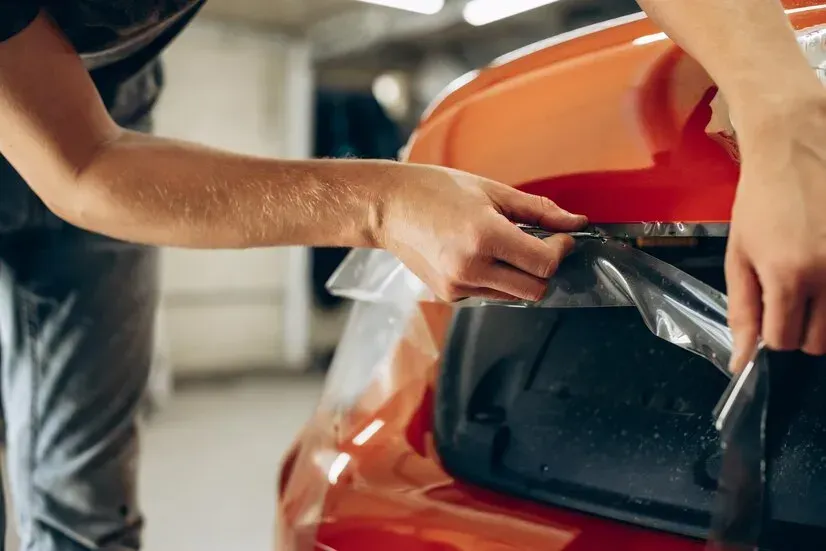
WHAT OUR CUSTOMERS HAVE TO SAY.
At
Veteran Detail we pride ourselves on providing outstanding Customer Service, and our ability to put right every little detail.
IS YOUR VEHICLE IN NEED OF SOME ATTENTION?
Book your next Detailing Requirements with
Veteran Detail. We are sure you will not be disappointed.
We have Packages to suit all your requirements Large or Small.
CALL 801–854–8575 TODAY
Contact Us
We will get back to you as soon as possible
Please try again later
331 W Main Street,
American Fork,
Utah
TEL:
801 – 854 – 8575
FAX: 801 – 756 – 6805
Timings
Detail/Shop Hours
- Mon - Fri
- -
- Saturday
- -
- Sunday
- Closed
Quick Menu
